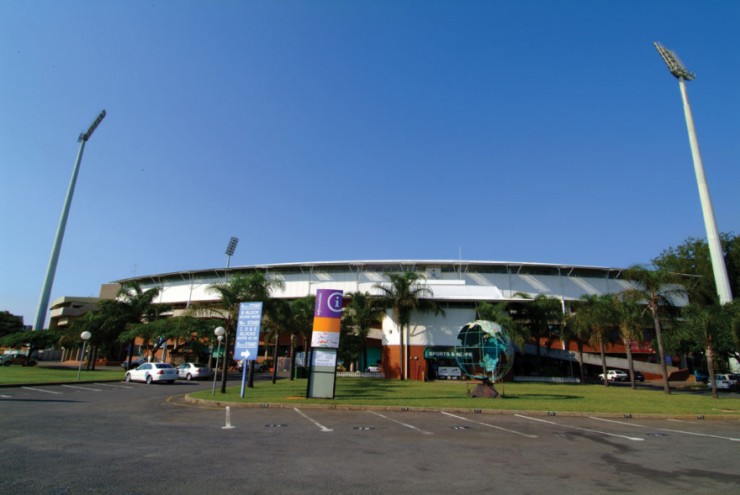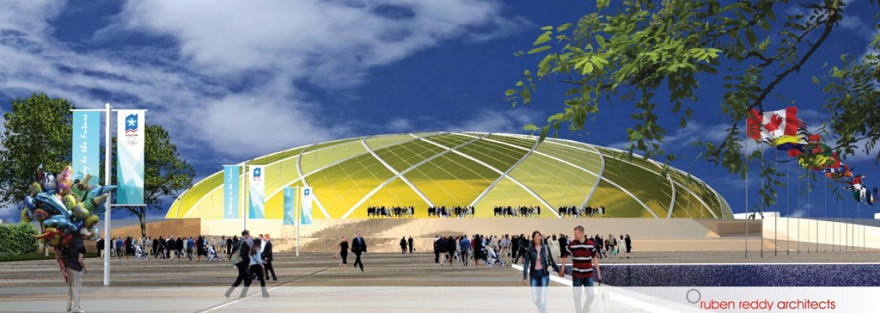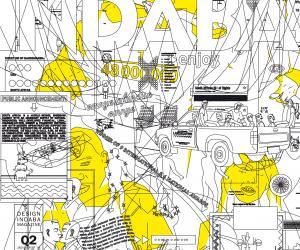First Published in
Ruben Reddy's passion for designing sports facilities was probably influenced by his immersion in sport, as both a competitor and a spectator.
The Durban-based architect played cricket competitively for 20 years and later threw his weight behind the redesign of the North Stand of the Kingsmead Cricket Stadium, which is his favourite completed project to date. Interestingly, the building was originally designed by another sporting architect, Tommy Bedford, a former Natal rugby captain and eighth man.
"We added a new floor and created the world's longest 'long room' for the 2003 Cricket World Cup, which is what the VIP lounges are called at cricket grounds," Reddy said of his work on the stadium.
Reddy and the team followed a lightweight, easy-to-erect construction methodology and the building was put up in record time during the cricketing off-season, using steel, timber flooring and fibre cement siding. The overhanging roof protects it from the weather. Together with the structural engineer, they won the National Steel Award for the building in 2004.
"Spatially, it's a grand space with a perfect view of the entire oval - there are no sightline compromises," said Reddy. "We created a long sub-divisible space that is also a very popular room for functions. It remains a good conference facility for the city."
Having built a few cricket stadia and the ICC Arena, which is an indoor facility, Ruben branched out into Olympic-sized projects - quite literally. His company is currently designing a football stadium that will host the opening ceremony of the 2014 Winter Olympics in Sochi, Russia, and house 45 000 people.
"Football stadia are generally considered the 'cathedrals' of the 21st century in building terms. Our job is to make them safe, functional, comfortable, family-friendly and at the same time attractive," explained Reddy.
Reddy has also been tasked with building the Ice Hockey arena, which will house 12 500 people. These two structures are the largest facilities to be built for the Olympics. As briefs go, these are enormous projects by any standards.
"Sports buildings are primarily about engineering," explains Reddy. "One of my influences is my current associate in the Organising Committee for 2010, Eugene van Vuuren. I'm also inspired by the work of Schlaich Bergermann from Stuttgart, with whom I'm going to engage with on the Olympic projects in Sochi."
The challenges of designing sports stadia are unique, as Reddy knows: "They present the challenge of a large spanning and imposing built form around a large tract of land - the competition area of the sport surface. It is all about how large forms and structures are integrated into an elegant, built form in the landscape.
"One needs to be conscious of the urbanity in which these stadia are located and there should be sensitivity to the cost and operation of the facilities so they are not, ultimately, a burden or a white elephant!"
One of Reddy's many other significant achievements includes having co-authored FIFA's official guide to football stadia, Football Stadiums: Technical Recommendations and Requirements, which is in its fourth imprint. He has subsequently also been tasked with making sure that sports stadia in South Africa meet the requisite safety requirements, which are stringent, following many stadium disasters around the world.
With this level of expertise, it's not surprising that Reddy won an Olympic tender in Sochi. But other projects keep him busy too.
A recent challenge is to design a massive complex in Ljubljana, Slovenia. Private developer Joc Pececnik, an Internet gaming wizard and founder of the Elektroncek Group, is behind the venture. The complex will incorporate a sporting stadium, a 20 000 m2 shopping area, a four-star hotel, billiard rooms, a 10-pin bowling alley, a 25 m shooting range and a boutique football stadium.
Another project closer to home, Reddy's firm is one of five to be working on the brand new R7,2-billion King Shaka Airport. Distinct from Durban International, the King Shaka Airport must be ready in time for the FIFA World Cup in 2010.
The drill
When and where you were born? Where did you study?
I was born in Durban North, close to Umgeni, in 1962. My grandfather's property was affected by the Group Areas Act and we were forced to leave in 1964. This may well have influenced my family's political consciousness. I studied at the University of Natal, Durban, from 1982 to 1988 and dived straight into practice. I broke all the rules for registration that demanded I work for someone for two years. In retrospect, I should have done this! It would have given me a better understanding of the business of running a firm.
What drew you towards architecture?
I think I was looking for the perfect balance of the arts and science. I did not know any architects, so I was entering uncharted waters.
Your initial projects were politically motivated to a degree, which projects were these and what did they mean to you?
I took a conscientious decision to not do any work that would in any way compromise my political views. So while colleagues were benefiting from the House of Delegates school building programme, I refused to apply for those appointments.
Rather, I spent hours dealing with community and proposed development issues with organisations like the Umkhumbane Residents Association, a community in Cato Manor. The Cato Manor Development Association, then in its infancy, would try to engage people with complex planning proposals through a participative process and attempt to get people to respond. Someone needed to get people to understand drawings and reports - that someone was me!
That was the beginning of my involvement with non-statutory bodies and the creation of opportunities for previously disadvantaged people in the built environment.
Who are your architectural heroes?
As a book collector, it is difficult to identify one architect. Buildings I appreciate include Renzo Piano's stadium in Bari, Michael Hopkin's Rose Bowl in Southampton for the Hampshire Cricket Club, Santiago Calatrava's roof on the Athens Olympic Stadium and many others. The writing and work of Louis Kahn stands out, as well as the sensitivity of the work of Glenn Mercutt in Australia and Geoffrey Bawa in Sri Lanka.
Spending three days driving around KwaZulu-Natal, judging architecture with Jack Diamond, ex-South African, now Canadian starchitect, will stay with me forever! The man studied under Kahn at Penn, taught at Penn and held the chair in Toronto before forming his own office and winning numerous competitions across the world.
What is your favourite building in the world?
If there is an architect who could answer this, he or she should read more!












